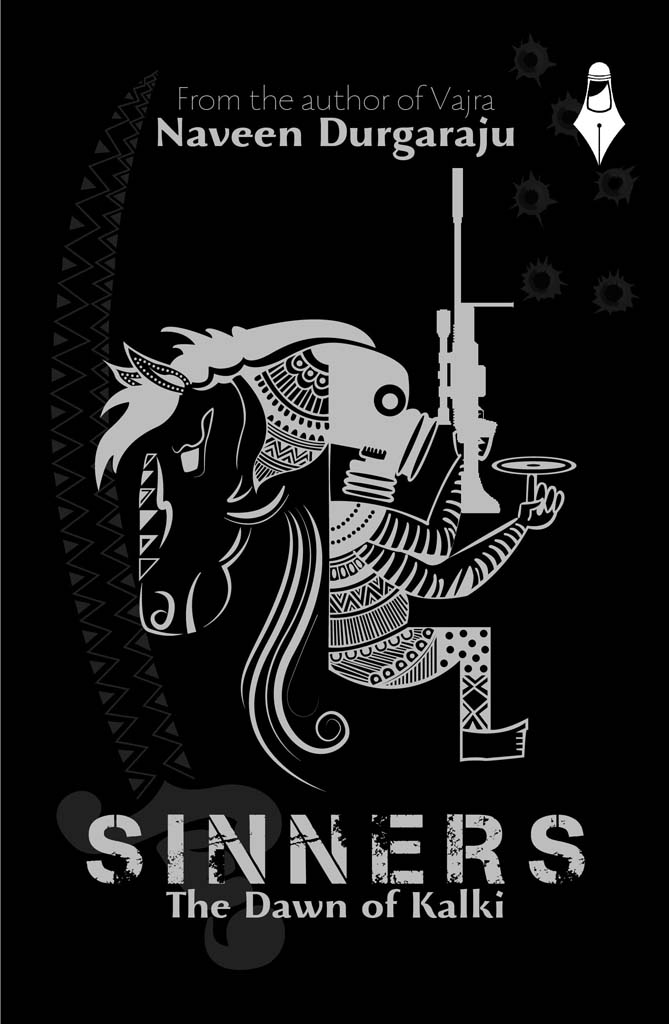CHARACTERS: 5/5
WRITING STYLE: 4/5
CLIMAX: 4.5/5
ENTERTAINMENT QUOTIENT: 4.5/5
The story starts most dramatically with the bloodcurdling screams of notorious prisoners in the Tihar Jail of India as they are choked to death by an invisible force. Later, the inmates of Yerwada Central Jail in India meet the same fate. Soon, this phenomenon spreads all over killing the world’s most wanted criminals and later, also, politicians and high profile movie stars. Gradually, the common men come under its grasp too as “common death’ increases and purges become more frequent that spontaneously combust all things, leaving the burnt buildings and charred skeletons behind. Most astonishingly, pregnant women start disappearing as if dissolving into thin air!
The reason behind this bloodshed and chaos: A twelve-year-old boy in a yogic stance – one who is called the 10th reincarnation of Hindu God Vishnu – “Kalki”!
He is the source of a psychic wave that has caused huge disruptions from the region called “Area Zero”. Countries, in fear of total destruction, attempt to destroy this area by launching nuclear weapons only to be deflected away, keeping “Area Zero” unharmed. However, the explosions lead to disruption in connectivity and the radiations results in the growth of mutant animals and also, Kinkars – cannibalistic humanoids that prey on the gradually diminishing population of India.
[perfectpullquote align=”full” bordertop=”false” cite=”” link=”” color=”” class=”” size=””]What do the remaining survivors do? Lament over the loss of their near and dear ones or take up arms and fight for their own survival?[/perfectpullquote] Different groups arise out of the ashes of the death: the Sinless, the Forgiven, the Sinners and the Kinkars that sort of symbolises the formation of the Mahajanapadas that had settled in different parts of ancient India from the 6th Century to the 4th Century BCE – some Republics, others Monarchies. And like the Mahajanapadas, each of these groups fights the rest to attain dominance over the others. The fight is over resources like oil, food, medicine and armaments, whose quantity is constantly dwindling!These groups have their own respective Gods they bow down to and their own customs and way of living, which in a way, is similar to the caste system practised in India. Like the Brahmins, the Sinless headed by the “Purohit” believe themselves to be superior to the other groups and thus, qualified to decide the fate of the population.
Throughout the journey, the survivors face death at close range and witness events unfathomable by the human mind. Tough times call for tough decisions to be made that keeps the survivors awake at night fearing the recurring flashbacks and nightmares and also, trepidation about what the future holds for them.
None of them knows the reason why their lives were spared. So, they decide to move towards “Area Zero” overcoming all hurdles to get some answers for their existence. Will they survive the deadly obstacles in their path? Which group will emerge the most powerful in this unnatural battle?
In Sinners – The Dawn of Kalki, the author describes Kalki as the annihilator of the wicked barbarian men, which is similar to the elucidation provided in the Shrimad Bhagavatam Maha Purana itself. The author has a commendable grasp of the notions and systems of the Indian society as he beautifully portrays the tragedy with vivid details and vibrant characterization which keeps the readers enthralled until the end!
The language used in the book is lucid and the scenes are descriptive. The book adopts a racy narrative and a relatable tone for the current generation. The author also dwells on the subjects of caste discrimination, social exclusion, corruption, morality, oppression and objectification of women and tyrannical rule in his narration. It was, overall, a fantastical read that ends on a cliffhanger leaving the audience in suspense over the future course of action of the survivors. If you are a fan of post-apocalyptic fantasy fiction or Hindu mythology then you must give this book and the rest to follow in the trilogy a read. I give this book 4.5 stars!
Can’t wait to read Sinners – The Dawn of Kalki? Buy your copy at the link below.
